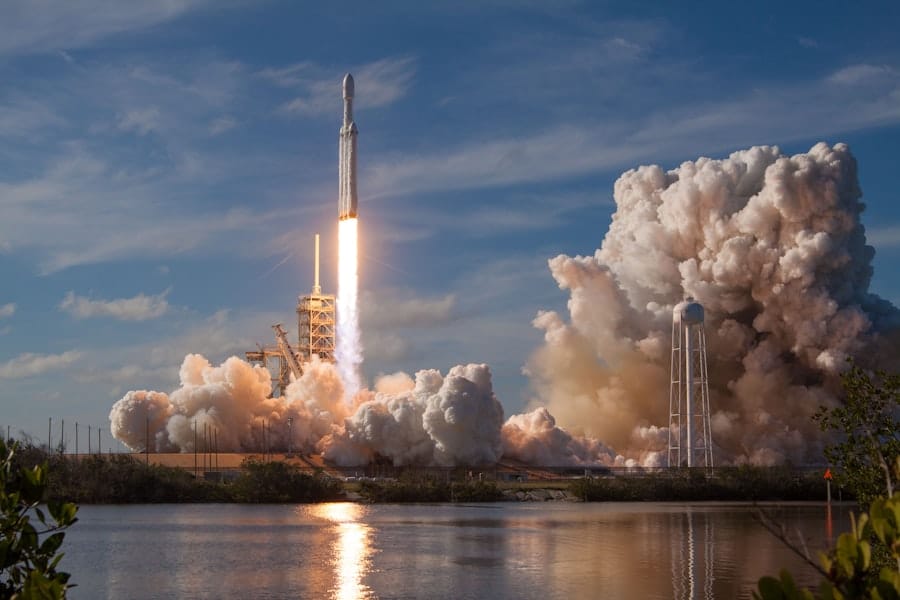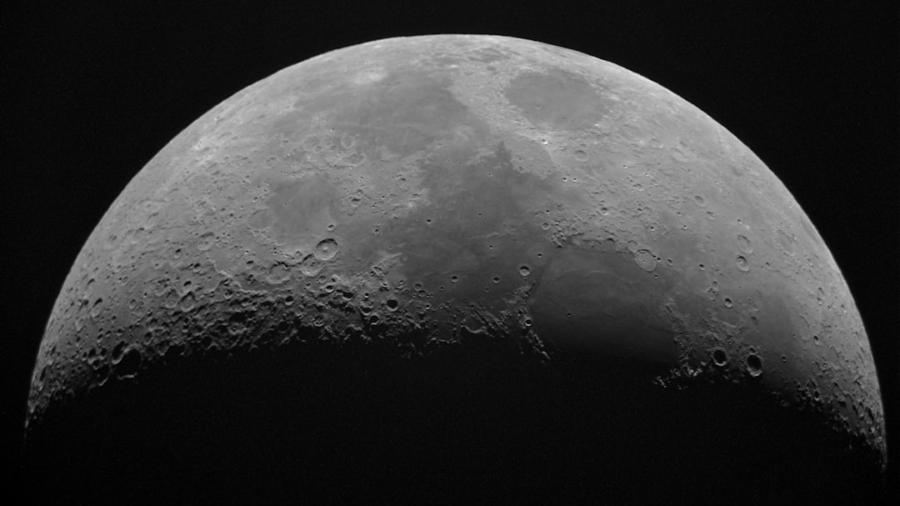The exploration of outer space has long captivated human imagination, but as we venture further into the cosmos, the need for sustainable living environments becomes paramount. AI-driven space habitats represent a significant leap forward in our ability to create self-sustaining ecosystems that can support human life for extended periods. These habitats are not merely structures; they are complex systems that integrate artificial intelligence to manage resources, monitor health, and ensure the well-being of inhabitants.
The integration of AI into space habitats is not just a technological enhancement; it is a necessity for the success of long-term missions to destinations such as Mars or beyond. As we look toward the future of space exploration, the role of AI in these habitats becomes increasingly critical. The vast distances and harsh conditions of space present unique challenges that require innovative solutions.
AI can analyze vast amounts of data in real-time, making it possible to optimize life support systems, manage energy consumption, and even assist in scientific research. This article will delve into the multifaceted role of AI in space habitats, exploring design considerations, sustainability, human interaction, safety protocols, and real-world case studies that illustrate the potential of this technology.
Key Takeaways
- AI-driven space habitats are designed to support long-term space missions by integrating artificial intelligence into various aspects of habitat design and operation.
- Artificial intelligence plays a crucial role in long-term space missions by assisting with tasks such as monitoring habitat systems, managing resources, and providing support for crew members’ physical and mental well-being.
- Design considerations for AI-driven space habitats include factors such as space optimization, energy efficiency, and the integration of sustainable technologies to support self-sufficiency in resource management.
- Sustainability and self-sufficiency are key goals for AI-driven space habitats, with a focus on recycling, regenerative life support systems, and the use of local resources to minimize reliance on Earth-based supplies.
- Human-AI interaction in space habitats involves the development of intuitive interfaces, communication systems, and protocols to ensure effective collaboration and decision-making between crew members and AI systems.
The Role of Artificial Intelligence in Long-Term Space Missions
Artificial intelligence serves as the backbone of operations within AI-driven space habitats, enabling autonomous decision-making and enhancing the efficiency of various systems. One of the primary roles of AI is to monitor environmental conditions and resource levels continuously. For instance, AI algorithms can analyze data from sensors that track air quality, temperature, and humidity, ensuring that the habitat remains within optimal parameters for human health.
This real-time monitoring allows for immediate adjustments to be made, such as regulating oxygen levels or managing waste disposal systems. Moreover, AI can facilitate predictive maintenance of habitat systems. By employing machine learning techniques, AI can identify patterns in equipment performance and predict potential failures before they occur.
This capability is crucial in a space environment where repairs may be challenging or impossible due to limited resources and the absence of immediate support. For example, NASA’s Jet Propulsion Laboratory has been developing AI systems that can autonomously diagnose issues with spacecraft systems, significantly reducing the need for human intervention and increasing mission reliability.
Design Considerations for AI-Driven Space Habitats

The design of AI-driven space habitats must account for a multitude of factors that influence both functionality and livability. One critical consideration is modularity. Modular designs allow for flexibility in habitat expansion and reconfiguration based on mission needs or crew size.
Each module can be equipped with its own AI systems tailored to specific functions, such as agricultural production or scientific research. This modular approach not only enhances adaptability but also simplifies repairs and upgrades. Another essential aspect of design is the integration of human factors into the habitat’s layout and technology.
The psychological well-being of astronauts is paramount during long missions, and AI can play a role in creating environments that promote mental health. For instance, AI can analyze crew interactions and suggest modifications to living spaces to enhance social cohesion or provide personalized entertainment options based on individual preferences. Additionally, the habitat’s design must incorporate redundancy in critical systems to ensure that failures do not compromise the safety or comfort of the crew.
Sustainability and Self-Sufficiency in AI-Driven Space Habitats
Sustainability is a cornerstone of any long-term space mission, and AI-driven habitats are designed with self-sufficiency in mind. One of the most promising areas of research is closed-loop life support systems that recycle air, water, and waste.
For example, advanced algorithms can manage hydroponic or aeroponic farming systems that produce food while simultaneously purifying water through plant transpiration. Energy management is another critical component of sustainability in space habitats. Solar panels are often used to harness energy from the sun, but AI can enhance energy efficiency by predicting energy needs based on crew activities and environmental conditions.
By intelligently managing energy storage and distribution, AI ensures that power is available when needed while minimizing waste. This capability is particularly vital during periods when solar energy may be less accessible, such as during long Martian nights.
Human-AI Interaction in Space Habitats
The interaction between humans and AI within space habitats is a complex dynamic that requires careful consideration. Effective communication between crew members and AI systems is essential for mission success. Natural language processing capabilities enable astronauts to interact with AI through voice commands or text inputs, making it easier to access information or control habitat systems without extensive training.
For instance, an astronaut might ask the habitat’s AI for updates on resource levels or request assistance with a specific task. Moreover, the design of user interfaces must prioritize usability and accessibility. Intuitive interfaces that present information clearly can significantly enhance crew efficiency and reduce cognitive load during high-stress situations.
Additionally, AI can learn from crew interactions over time, adapting its responses to better suit individual preferences and communication styles. This personalized approach fosters a collaborative environment where humans and AI work together seamlessly to achieve mission objectives.
Safety and Emergency Protocols in AI-Driven Space Habitats

Safety is a paramount concern in any space mission, and AI-driven habitats must be equipped with robust emergency protocols to address potential crises. One critical function of AI is its ability to detect anomalies in habitat systems that could indicate a failure or safety hazard. For example, if an air filtration system malfunctions, AI can quickly identify the issue through sensor data analysis and initiate emergency protocols to alert the crew while simultaneously activating backup systems.
In addition to monitoring system integrity, AI can assist in emergency response training for astronauts. Simulations powered by AI can create realistic scenarios that prepare crew members for various emergencies, such as fire outbreaks or sudden depressurization events. By analyzing crew performance during these simulations, AI can provide feedback on decision-making processes and suggest improvements to enhance overall safety preparedness.
Case Studies of AI-Driven Space Habitats in Development
Several organizations are actively developing AI-driven space habitats that showcase the potential of this technology in real-world applications. NASA’s Artemis program aims to establish a sustainable human presence on the Moon by 2024, with plans for lunar habitats that incorporate advanced AI systems for life support and resource management. The Lunar Gateway project envisions a space station orbiting the Moon that will serve as a hub for lunar exploration and research, utilizing AI to optimize operations and support crew activities.
Another notable example is the European Space Agency’s (ESA) “MARS 500” project, which conducted simulated long-duration missions to study human behavior in confined environments. The insights gained from these simulations are informing the design of future Martian habitats equipped with AI technologies that will monitor crew health and optimize living conditions based on real-time data analysis. Additionally, private companies like SpaceX are exploring the integration of AI into their spacecraft designs for missions to Mars.
The Starship program aims to develop fully reusable spacecraft capable of carrying humans to Mars and beyond while incorporating autonomous systems for navigation and life support management.
The Future of AI-Driven Space Habitats and Long-Term Missions
As we look toward the future of space exploration, the potential for AI-driven habitats continues to expand. Advances in machine learning and robotics will likely lead to even more sophisticated systems capable of performing complex tasks autonomously.
Moreover, as we gain experience from missions to the Moon and Mars, lessons learned will inform the design of habitats for even more distant destinations, such as asteroids or exoplanets. The integration of AI will be crucial in managing the unique challenges posed by these environments, including extreme temperatures, radiation exposure, and limited resources. In conclusion, the development of AI-driven space habitats represents a transformative step toward sustainable human presence beyond Earth.
By leveraging artificial intelligence to optimize life support systems, enhance safety protocols, and foster human-AI collaboration, we are paving the way for successful long-term missions into the cosmos. As technology continues to evolve, so too will our understanding of how best to create environments where humans can thrive amidst the stars.
A related article discussing the best free software for translation today can be found

